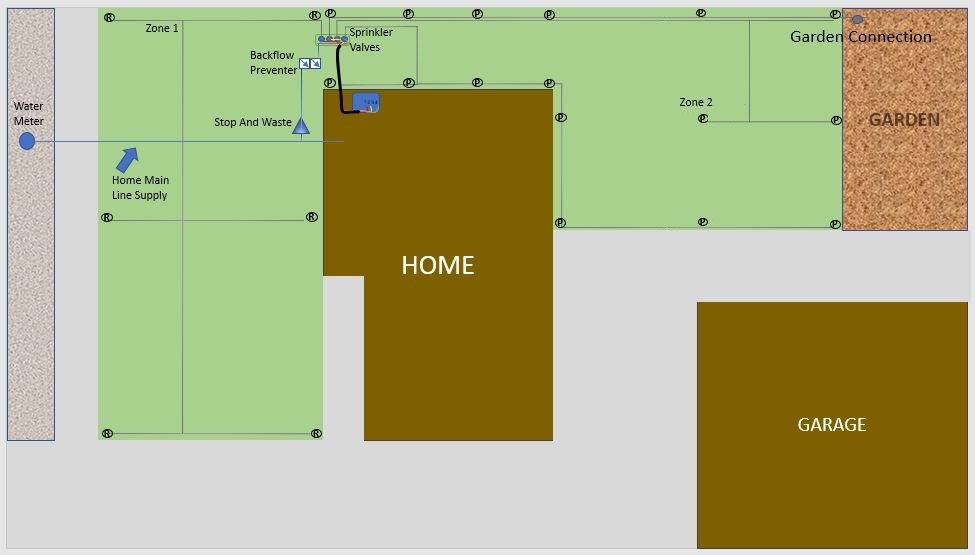
Basic Layout Patterns
The shapes in this image represent the space between sprinkler heads.

The shapes in this image represent the space between sprinkler heads.

This example uses full heads to demonstrate the importance of layout in a square pattern. Square patterns are most common in residential installations due to their simplicity.

The triangle pattern (actually called a diamond pattern) is more efficient but less common due to its more complex layout. It provides better coverage with fewer dry spots.
While there is software available to aid in layout design, it can be expensive and time-consuming to learn. The manual method described here is often sufficient for most residential installations.

Accurately measure the property to determine proper spacing for sprinklers. This is crucial for achieving optimal coverage.

Create a layout using sprinkler heads. Use rotors for larger areas if possible, as they are more efficient for covering wide spaces.

This is an example of an actual sprinkler system layout. Note how the heads are positioned to provide overlapping coverage across the entire area.

While this layout is good, there are still gaps in overlapping coverage. This is a common and often unavoidable issue in sprinkler system design. The goal is to minimize these gaps as much as possible.